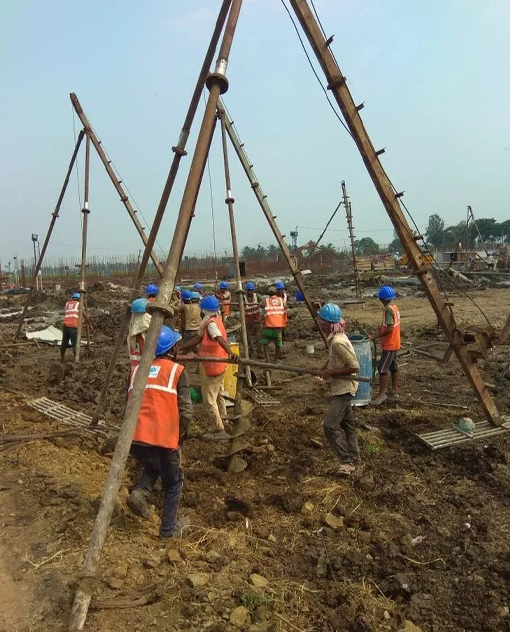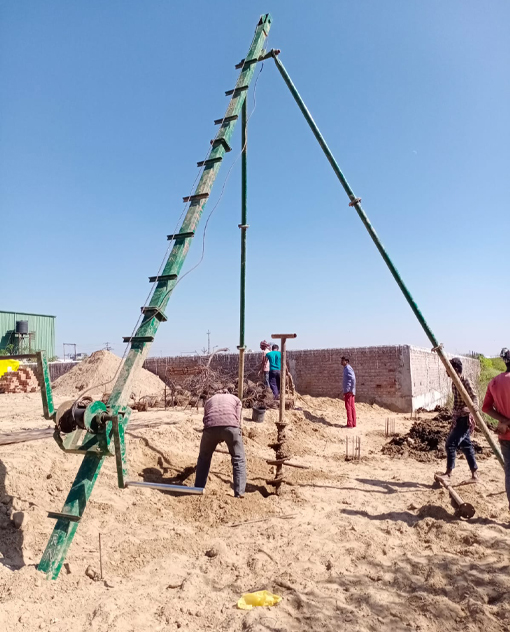Our Product Descriptions
Manual auger piling is a foundational construction technique used to create deep, stable foundations for structures.
It involves the use of a specialized tool called an auger, which resembles a large corkscrew or drill bit. This auger is manually rotated into the ground to excavate soil and create a hole of the desired diameter and depth. The process typically begins with the selection of the appropriate auger size based on the specific requirements of the project. The auger is then attached to a handle or shaft, allowing it to be turned by hand or with the assistance of additional workers. Workers apply downward pressure while rotating the auger, allowing it to penetrate the soil. As the auger digs deeper into the ground, soil is displaced upward and removed from the hole. This process continues until the desired depth is reached or until the auger encounters resistance, such as dense soil or bedrock.
Manual auger piling is often used in situations where access is limited or where noise and vibration need to be minimized, such as in urban environments or near sensitive structures. It can be a slower process compared to mechanized methods, but it offers greater control and precision, particularly in areas with challenging soil conditions.
Once the desired depth is achieved, the hole may be further prepared by removing any excess soil and ensuring the bottom is level and free from debris. Depending on the specific requirements of the project, reinforcement materials such as steel cages or concrete may be inserted into the hole before pouring concrete to create a solid foundation. Overall, manual auger piling is a versatile and effective method for creating deep foundations in a wide range of soil conditions, providing stability and support for structures ranging from buildings to bridges.

